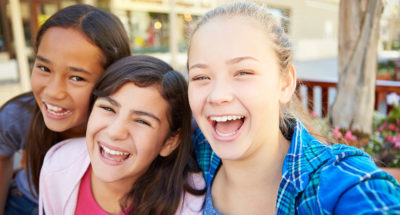
Make Fast Friends
Students participate in a “speed-friending” activity by taking turns describing themselves to classmates in 30 seconds.

Students participate in a “speed-friending” activity by taking turns describing themselves to classmates in 30 seconds.
Students will:
Take a moment to reflect on some of your closest friends. What brought you together? What do you share in common?
Preparation: Arrange chairs in two rows facing each other.
Adapted from an activity in the Second Step program, a social-emotional learning curriculum created by Committee for Children. Since 1979, Committee for Children, a 501(c)(3) nonprofit, has advocated for policies to enhance, gathered research to support, and developed educational programs to advance the safety and well-being of children through social-emotional learning (SEL).
Do you notice whether students have made new friends after participating in this practice?
Numerous studies show that positive peer relationships affect students’ academic success and mental well-being. Indeed, one study found that having these kinds of connections can explain up to 40 percent of adolescents’ academic achievement. Other studies have linked healthy relationships between students to higher self-esteem and resilience, decreased loneliness, greater health and well-being, and increased engagement in school.
When students feel a sense of connectedness at school—where there is at least one adult on campus who cares that they are there and where they feel connected to peers—a fundamental psychological need of theirs is being met.
And when students feel connected and cared about, they are better able to expend energy on helping and caring for others, which in turn, fosters a sense of belongingness for everyone at school.

Are you ready to build a kinder, happier school where everyone belongs? Join Greater Good Educators! Explore the science of well-being in a supportive community of educators from around the world. Registration is now open for the 2025-2026 school year!
Comments